Health
Top 10 Health Benefits of Ivory Red Mangoes That You Should Know!
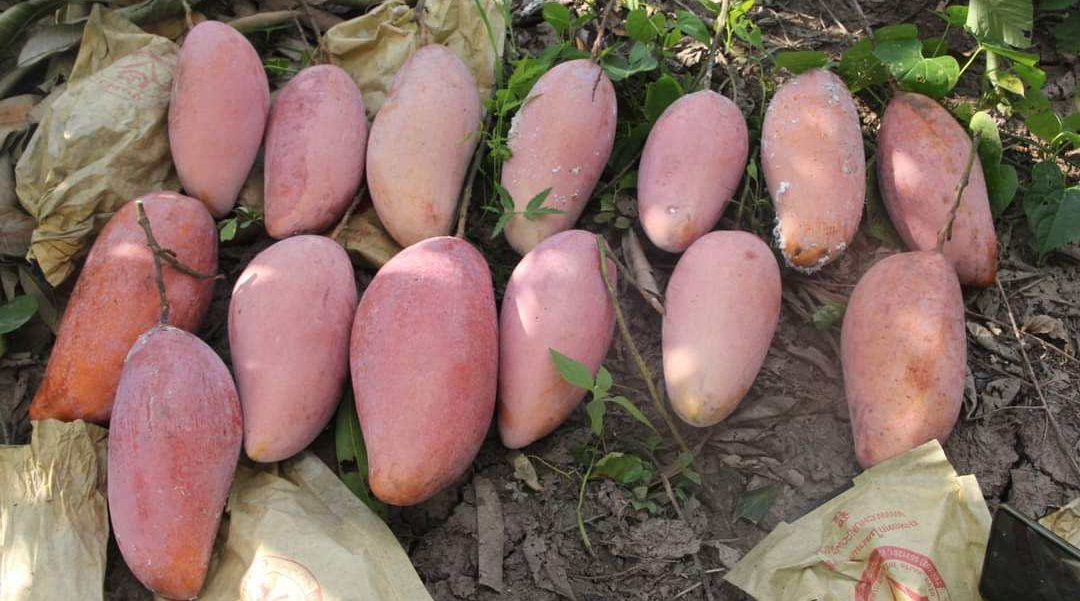
Ivory Red mangoes are a unique variety of mangoes with a distinct taste and texture. These mangoes are known for their ivory-coloured flesh, which is sweet and slightly tangy. They are also known for their small size and thin skin, which makes them easy to peel and eat.
Ivory Red mangoes are primarily grown in China, where they are a popular fruit. They are also grown in other parts of the world, including India and Thailand. These mangoes are a good source of vitamins and minerals, including vitamin C, vitamin A, and potassium. They are also low in calories, making them a healthy snack option.
If you’re looking to try a new variety of mango, Ivory Red mangoes are definitely worth a try. They have a unique flavour that sets them apart from other types of mangoes, and their small size and thin skin make them easy to eat. Whether you eat them on their own or use them in recipes, Ivory Red mangoes are sure to be a hit.
Classification of Ivory Red Mangoes
Ivory Red Mangoes belong to the Mangifera indica species, which is a member of the Anacardiaceae family. This family includes other economically important crops such as cashew, pistachio, and mombins. The scientific name of Ivory Red Mangoes is Mangifera indica L.
The Ivory Red Mango is a cultivar that originated in Thailand and was first introduced to Yunnan, China in 1914. It is named after its resemblance to a young elephant’s tusk due to its long, thin shape. The fruit has a thin, smooth skin and a sweet, juicy flesh with few fibers. The fruit is usually harvested in the summer months.
Ivory Red Mangoes are classified as a tropical fruit and are considered one of the most economically important fruit crops in the world. They are grown in many countries including India, Thailand, China, and Kenya. The fruit is rich in vitamins A and C, as well as potassium and fiber.
In terms of mango classification, Ivory Red Mangoes fall under the “Indian type” of mangoes. This classification is based on the shape, size, and flavor of the fruit. Indian type mangoes are generally oval-shaped and have a sweet, juicy flesh with a strong aroma.
Overall, Ivory Red Mangoes are a delicious and nutritious tropical fruit that are enjoyed by many around the world. Their classification as an “Indian type” mango is based on their shape, size, and flavor, and they are an important crop in many countries.
Cultivation Techniques
Soil Requirements
Ivory red mangoes require well-drained soil with a pH range of 5.5 to 7.5. The soil should be rich in organic matter and have good water retention capacity. To ensure optimal growth, it is recommended to conduct a soil test before planting. The results of the soil test will help determine the nutrient and fertiliser requirements for the mango trees.
Climate and Weather Conditions
Ivory red mangoes are well-adapted to warm climates with temperatures ranging from 24 to 30 degrees Celsius. They require ample sunlight for optimal growth and fruit production. Mango trees are sensitive to frost and cold weather conditions, which can damage the flowers and reduce fruit yield. Therefore, it is essential to plant mango trees in areas with a warm climate and to protect them from cold weather conditions.
Irrigation and Water Management
Ivory red mangoes require regular watering to ensure optimal growth and fruit production. The frequency and amount of watering depend on the climate, soil type, and stage of growth. During the dry season, mango trees require more frequent watering to prevent water stress. However, overwatering can lead to root rot and other diseases. Therefore, it is essential to monitor the soil moisture level and adjust the watering frequency accordingly.
To ensure efficient water use, it is recommended to use drip irrigation or other water-saving techniques. Mulching can also help retain soil moisture and reduce water loss through evaporation.
Ivory red mangoes require well-drained soil, warm climate, ample sunlight, and regular watering for optimal growth and fruit production. By following the recommended cultivation techniques, farmers can increase their yield and profit while contributing to the sustainable production of this delicious fruit.
Nutritional Profile
Ivory red mangoes are a delicious and nutritious fruit that are packed with vitamins, minerals, and antioxidants. One cup (165 grams) of mango provides 10% of your daily vitamin A needs, which is essential for maintaining healthy skin, vision, and immune function.
In addition to vitamin A, mangoes are also a good source of vitamin C, providing 67% of your daily needs in just one cup. Vitamin C is essential for collagen formation, which helps to maintain healthy skin, bones, and blood vessels. It is also a powerful antioxidant that helps to protect the body from harmful free radicals.
Mangoes are also a good source of dietary fibre, which helps to promote healthy digestion and prevent constipation. One cup of mango provides 3 grams of fibre, which is 12% of your daily needs.
Furthermore, mangoes are a rich source of potassium, which is important for maintaining healthy blood pressure levels and supporting heart health. One cup of mango provides 6% of your daily potassium needs.
Overall, ivory red mangoes are a nutritious and delicious fruit that can be enjoyed as a snack or added to a variety of recipes. They are low in calories and high in essential vitamins and minerals, making them a great addition to a healthy and balanced diet.
Economic Significance
Ivory red mangoes are highly valued in the global market for their unique taste and texture. They are known for their sweet and juicy flesh, with a delicate aroma and a creamy texture. The economic significance of ivory red mangoes lies in their high demand both locally and internationally, which has led to an increase in production and export.
Market Trends
The demand for ivory red mangoes has been steadily increasing in recent years, with consumers around the world looking for new and exotic fruits to add to their diets. This has led to an increase in production, with many countries investing in new technologies and techniques to improve yields and quality.
In the UK, for example, the demand for exotic fruits has been growing steadily, with mangoes being one of the most popular. According to a recent report by the Agriculture and Horticulture Development Board (AHDB), the UK imported over 60,000 tonnes of mangoes in 2019, with a value of over £100 million. The report also highlights the growing demand for premium mangoes such as the ivory red variety, which can fetch higher prices in the market.
Export Potential
The export potential for ivory red mangoes is significant, with many countries looking to tap into the growing demand for exotic fruits. In Africa, for example, countries such as Kenya, Tanzania, and Uganda are investing in new technologies and techniques to improve yields and quality, with a view to exporting to markets such as Europe and the Middle East.
According to a report by ResearchGate, the quantity of mango traded among countries was 0.83 million tonnes in 2008, which accounts for no more than 2.5% of world mango production. However, with the growing demand for exotic fruits, this is expected to increase in the coming years, providing opportunities for countries that can produce high-quality mangoes such as the ivory red variety.
In conclusion, the economic significance of ivory red mangoes lies in their high demand both locally and internationally, with a growing market for premium mangoes. With the right investment in technology and techniques, countries with the capacity to produce high-quality mangoes such as the ivory red variety can tap into the growing demand for exotic fruits and benefit from the export potential.
Health
SAD! Lassa Fever Claims 127 Lives Across 18 States in Nigeria(List)
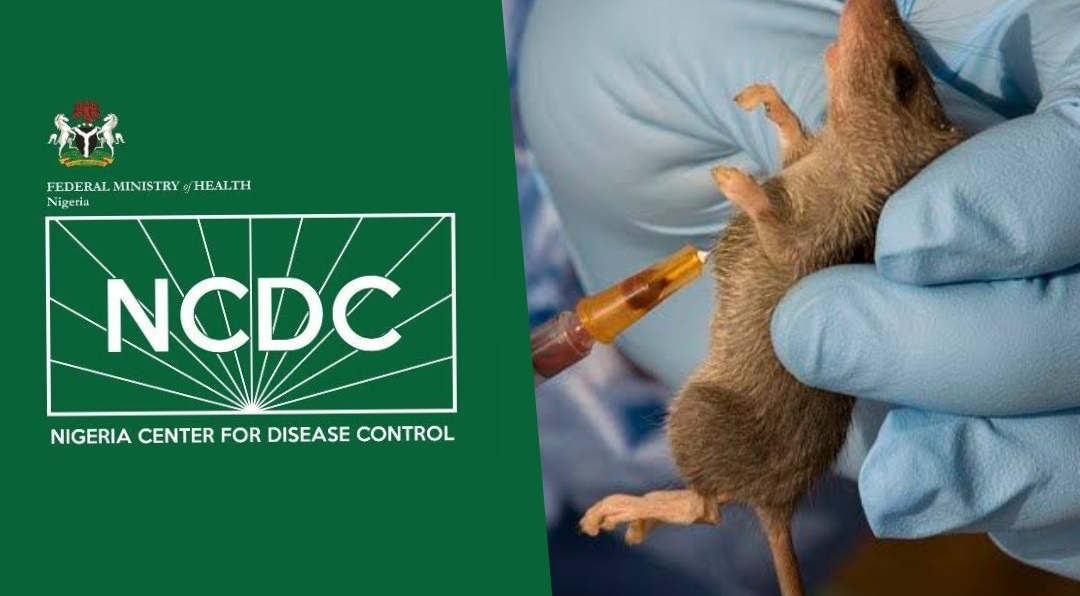
The Nigeria Centre for Disease Control and Prevention (NCDC) has reported a sharp rise in Lassa fever cases, with 127 deaths confirmed across 18 states as of April 6, 2025.
According to the agency’s latest situation report, 674 people have tested positive for the virus out of 4,025 suspected cases recorded between January and early April.
The current Case Fatality Rate (CFR) stands at 18.8%, slightly higher than the 18.5% recorded during the same period in 2024, indicating a worrying upward trend.
The most affected states include Taraba (31 deaths), Ondo (26), Edo (17), Bauchi (12), and Ebonyi (11). Other states with reported fatalities are Gombe (7), Kogi (4), Benue (4), Nasarawa (4), Plateau (5), Kaduna (2), and one death each in Enugu, Delta, Cross River, and Ogun.
The report also highlights that 71% of confirmed cases were concentrated in Ondo (30%), Bauchi (25%), and Edo (16%), with the remaining 29% spread across 15 other states. The virus has now reached 93 local government areas nationwide.
Lassa fever is a viral haemorrhagic illness transmitted mainly through exposure to food or household items contaminated by infected rodents, particularly the multimammate rat. It can also spread through direct contact with the blood, urine, feces, or other bodily secretions of an infected person.
The disease predominantly affects people between the ages of 21 and 30, with a male-to-female ratio of 1:0.8, according to NCDC data.
In response to the outbreak, the NCDC has activated the National Lassa Fever Multi-Partner, Multi-sectoral Incident Management System to strengthen surveillance, case management, risk communication, and coordination efforts at all levels.
As the country continues to battle the spread of the virus, the NCDC is urging citizens to maintain proper hygiene, store food in rodent-proof containers, and seek immediate medical attention if symptoms such as fever, headache, sore throat, chest pain, or vomiting occur
Health
FG identifies 1,277 persons for monitoring as Lassa fever kills 122
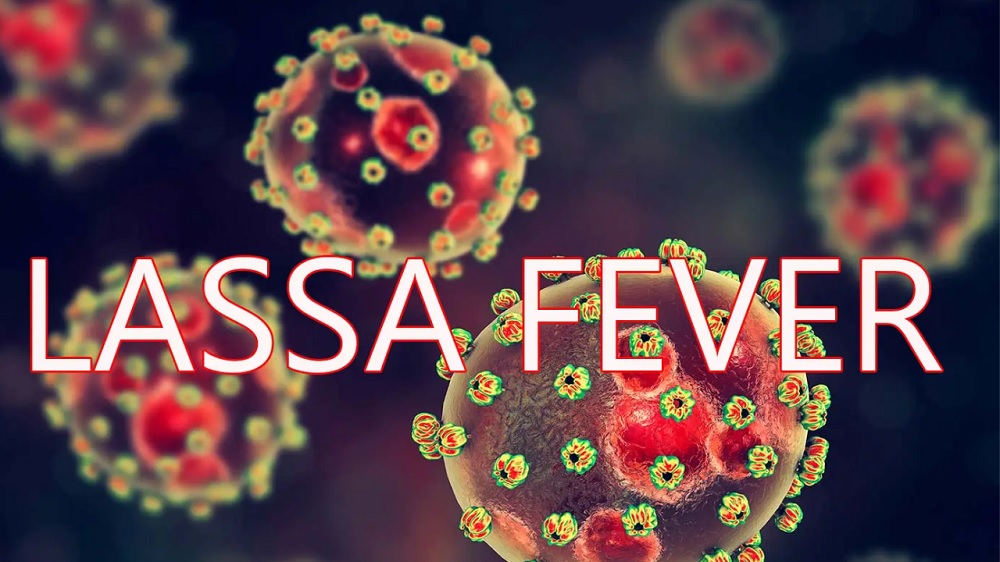
The Nigeria Centre for Disease Control and Prevention has listed 1,277 persons for follow-up over the possibility of being infected with Lassa fever. This follows the centre recording 659 confirmed cases out of 3,779 suspected cases and 122 deaths in 13 weeks (from January to March 30, 2025).
A report obtained from the NCDC on Friday indicated that no fewer than 18 states across the country have recorded Lassa fever cases, with Ondo, Bauchi, and Edo being the most affected.
The report partly reads, “Cumulatively, in week 13 of 2025, 122 deaths have been reported, with a Case Fatality Rate of 18.5%, which is lower than the CFR for the same period in 2024 (18.7%).
“In total for 2025, 18 states have recorded at least one confirmed case across 93 Local Government Areas. Seventy-one per cent of all confirmed Lassa fever cases were reported from these three states (Ondo, Bauchi, and Edo), while 29% were reported from 15 other states with confirmed Lassa fever cases. Of the 71% of confirmed cases, Ondo reported 30%, Bauchi 25%, and Edo 16%.
“The predominant age group affected is 21-30 years (Range: 1 to 94 years, Median Age: 30 years). The male-to-female ratio for confirmed cases is 1:0.8. The number of suspected cases increased compared to that reported for the same period in 2024. No new healthcare worker was affected in week 13. The National Lassa fever multi-partner, multi-sectoral Incident Management System (IMS) was activated to coordinate the response activities at all levels.”
The report shows that the contacts under follow-up number 1,277, while the contacts that have completed follow-up total 1,448.
According to the NCDC, the disease has affected 20 healthcare workers in eight states so far this year.
Lassa fever is an acute viral haemorrhagic fever caused by the Lassa virus. The natural reservoir for the virus is the multimammate rat (also known as the African rat), although other rodents can also act as carriers.
The public health institute stated that Lassa fever cases occur year-round, with peak transmission periods typically from October to May.
Health
WHO calls for countries to address disruptions to TB services

In the wake of massive cuts in US funding, the World Health Organization (WHO) today called on global health leaders, donors, and policymakers to protect and maintain tuberculosis (TB) care and support services around the world.
In a statement issued ahead of World Tuberculosis Day (March 24), the WHO said the “drastic and abrupt” cuts to global health funding threaten to reverse gains made in global efforts to combat TB, which remains the world’s deadliest infectious disease. Those efforts have saved an estimated 79 million lives worldwide since 2000, the organization said.
“The huge gains the world has made against TB over the past 20 years are now at risk as cuts to funding start to disrupt access to services for prevention, screening, and treatment for people with TB,” said WHO Director-General Tedros Adhanom Ghebreyesus, PhD. “But we cannot give up on the concrete commitments that world leaders made at the UN General Assembly just 18 months ago to accelerate work to end TB. WHO is committed to working with all donors, partners and affected countries to mitigate the impact of funding cuts and find innovative solutions.”
USAID cuts have crippled TB control efforts
While the statement does not specifically mention the US Agency for International Development (USAID), the Trump administration’s freeze of USAID funding, and the subsequent canceling of thousands of contracts issued by the agency, have left a gaping hole in funding for TB prevention, screening, and treatment services. The US government has been the leading bilateral donor to global TB control efforts, contributing $200 million to $250 million annually—roughly one quarter of international donor funding for the disease.
The WHO said 27 countries are facing crippling breakdowns in their TB response, with the biggest impact seen in high-TB burden countries in Africa, Southeast Asia, and the Western Pacific. Among the services that have been disrupted are diagnosis, active case finding, screening, and contact tracing, and those disruptions are resulting in delayed detection and treatment and increased transmission risk. Drug supply chains, laboratory services, and data and surveillance systems have also been undermined.
A recent update from StopTB Partnership, which works on TB response with more than 2,000 partners in 100 countries, provides some detail on the services affected by the USAID funding cuts. In Cambodia, active case finding has halted in half the country, resulting in 100,000 people missing TB screening and 10,000 cases of drug-susceptible (DS)-TB going undetected. In Kenya, sputum sample transport once supported by USAID has halted, affecting the diagnosis of DS- and drug-resistant (DR)-TB. In India, USAID-funded TB screening projects in vulnerable groups have stopped.
The huge gains the world has made against TB over the past 20 years are now at risk as cuts to funding start to disrupt access to services for prevention, screening, and treatment for people with TB.
Those are just three of dozens of examples. In a news release today, StopTB Partnership Executive Director Lucica Ditiu, MD, echoed Tedros’s call for action.
“People with TB need us,” Ditiu said. “We have to remain strong, and we can never ever give up the fight. Through innovative, global and national efforts and standing together, we will be able to achieve these targets of ensuring TB prevention, treatment, and care are accessible to all.”
TB was responsible for an estimated 1.25 million deaths in 2023, according to the WHO’s most recent annual report. An estimated 8.2 million people were newly diagnosed with the disease—the most cases in a year recorded by the WHO since it began global TB monitoring in 1995. High-burden TB countries have only recently begun to recover from the disruptions caused by the COVID-19 pandemic, which the WHO estimates resulted in 700,000 excess TB deaths.
Cuts exacerbate funding shortfalls
As the WHO notes, the funding cuts come amid what was already a shortfall in funding for global TB control efforts. In 2023, $5.7 billion was available for TB prevention, diagnostic, and treatment services in low- and middle-income countries, but that’s only 26% of the 2027 target goal of $22 billion. TB research is receiving just one fifth of its 2022 target of $5 billion. Cuts to US funding are only going to exacerbate the problem.
In a joint statement issued earlier this week, Tedros and the Civil Society Task Force on Tuberculosis called on countries to take urgent action to prevent any disruption to TB services, ensure domestic resources to sustain equitable and essential TB care, and safeguard essential TB drugs, diagnostics, care, and social protection coverage for TB patients. They also urged the establishment of national partner platforms that would bring together public and private sectors, civil society, nongovernmental organizations, professional societies, and donors to maintain momentum against TB in affected countries.
“This urgent call is timely and underscores the necessity of swift, decisive action to sustain global TB progress and prevent setbacks that could cost lives,” said Tereza Kasaeva, PhD, director of WHO’s Global Programme on TB and Lung Health, in today’s WHO news release.
-

 News12 hours ago
News12 hours agoJust in: Senator Natasha tenders satirical ‘apology’ to Akpabio
-
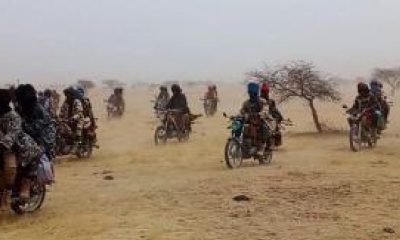
 News6 hours ago
News6 hours agoInsecurity: BUDA urges govt to quickly rescue Baruten from terrorists
-

 News8 hours ago
News8 hours agoUNUSUAL! Without invitation, Police declared me wanted — Daughter of ABC Transport owner
-

 News3 hours ago
News3 hours agoBreaking: Late gospel singer Osinachi’s husband sentenced to death by hanging
-

 News4 hours ago
News4 hours agoWeeks to 2nd anniversary, Niger deputy gov, plans to resign, move out personal effects
-
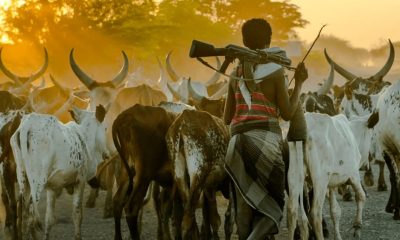
 News20 hours ago
News20 hours agoBenue LG chairman gives Fulanis 48hrs to leave all farmlands
-

 Metro13 hours ago
Metro13 hours ago‘My husband always makes love throughout the night until morning’ – Woman Wants Divorce
-

 News21 hours ago
News21 hours agoFive suspected kidnappers eliminated by police in Delta






